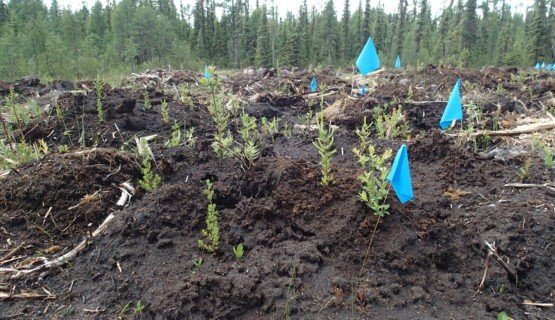The preservation and re-vegetation of Alberta’s boreal forest wetland ecosystems is a priority for oil sands producers whose operations cause surface disturbance.
Thawed peatland is sensitive to disturbances, which makes these areas difficult to access for reclamation activities in summer. Disturbed wetlands often have altered surface water patterns that are inhospitable to some vegetation, due to changes in water saturation and nutrient availability. Therefore, many seedlings planted during warm seasons do not survive long-term.
In February 2011, oil sands producers including Nexen, Suncor, Total, Statoil and ConocoPhillips, represented by the Canada Oil Sands Innovative Alliance (COSIA), conducted a winter wetland planting trial at the Wetland Centre located in Alberta’s boreal forest. With temperatures hovering between -17 °C and -25°C, the companies planted 900 black spruce trees at the Boreal Wetland Centre, in Evergreen Park.
This trial involved planting a non-commercial native species in a wetland area. Results recorded during summer 2011 indicate that more than 94 per cent of the black spruce trees survived. The success of this new technique will greatly increase the industry’s ability to reclaim similar ecosystems in the future.
Mounding of cleared site with excavator
Planting of trees on mounds
Mounds with saplings planted on them (2011).
Mounds with saplings planted on them post 2011
Overhead photograph of entire cleared site
Initial Site
2011, the saplings are planted on the prepared site and marked with pinflags.
Site today
2023. The site has regrown, area is largely populated by larch trees.











